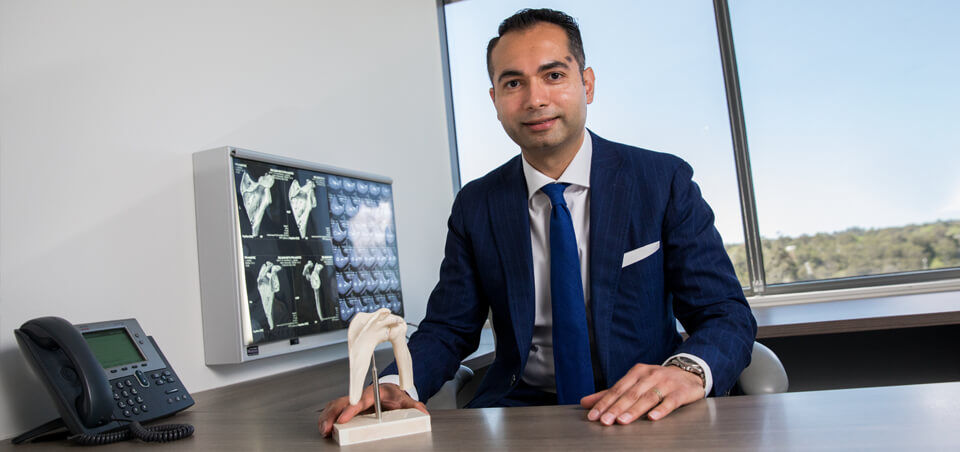Upper Limb Fractures
Knowledge that empowers
What is it?
The shoulder and elbow are both very complex joints. Their unique bony anatomy requires specialist understanding of the anatomy, biomechanics and contributions of bone and soft tissue structures in maintaining good mobility and stability.
Trauma to the shoulder and elbow can cause fractures, ligament and tendon ruptures and other injuries.
Proximal and distal humerus fractures are the most common, accounting for 5% of all fractures in the body. These fractures tend to occur in older patients who are osteoporotic. The most common mechanism for these upper limb fractures is a fall on the outstretched hand from a standing height. In younger patients, high-energy trauma is the cause of injury.

How is the diagnosis made?
After taking a thorough clinical history, a physical examination and diagnostic imaging including x-ray and CT with 3D reconstruction will assist in diagnosis and classification of fractures and associated soft tissue injuries.
Associate Professor. Raniga has subspecialist training and expertise in the management of fractures of the shoulder and elbow including:
- Proximal humerus fracture
- Clavicle fracture
- Scapula, glenoid and coracoid fracture
- Humeral shaft fracture
- Distal humerus fracture
- Radial head fracture
- Coronoid fracture
- Ulna fracture
- Fracture dislocations of the shoulder and elbow
What treatment may be required?
Not all fractures of the shoulder and elbow require surgery; it is, however, recommended that all fractures are assessed by a shoulder and elbow subspecialist to determine the appropriate course of management.
The treatment objective in proximal and diatal humerus fractures is to allow bone and soft tissue healing in a normal anatomical position to maximise function of the upper extremity. Most fractures are minimally displaced and stable, so surgical fixation is not required and immobilisation in a sling.
Displaced fractures require reconstruction with surgery, because if left untreated will have a high likelihood of producing limited function. The overall prognosis from such fractrures depends on numerous factors (type of fracture, age, general health, patient’s expectations, commitment to rehabilitation, ability to restore the anatomy). They require at least 1 year for full recovery.
